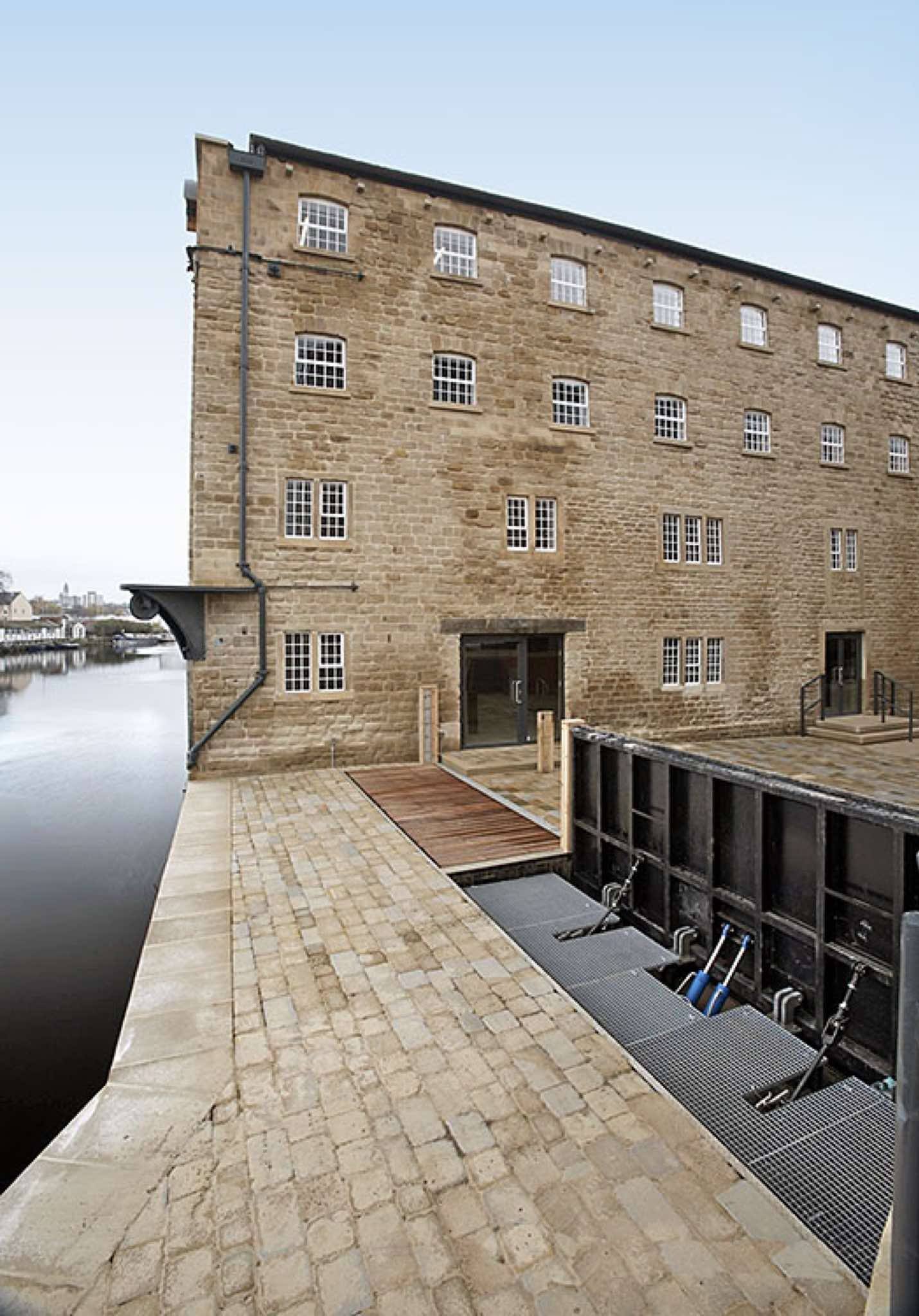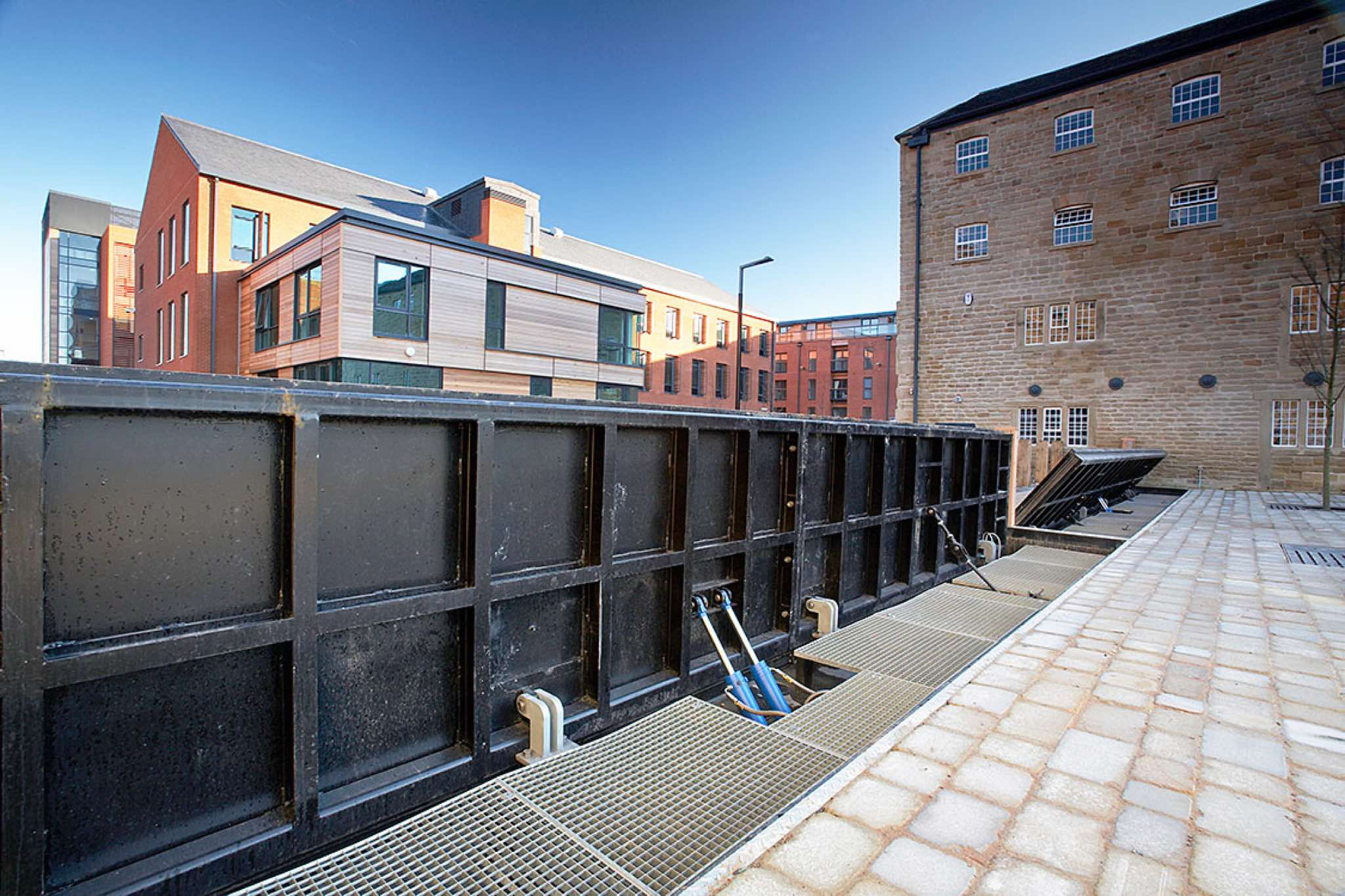Overview
The Wakefield waterfront has been undergoing a £100m regeneration scheme over recent years. In 2007 Flood Control Limited was commissioned by Capita Symons to design and build flood defences for the area.
The waterfront area is subject to frequent flooding from the River Calder. While designing the scheme, Flood Control Limited needed to respect the historic nature of the area and meet the approval of the client CTP St James, the Wakefield Planning Authority, English Heritage, British Waterways and the Environment Agency.
The Requirement
An unmanned, fully automated system was requested. Complete reliability was a must and barriers needed to be discrete and in keeping with the surroundings.
The Solution
The flood defence system is managed by an intelligent control system consisting of a main control unit (MCU) in the site management suite and a local control unit (LCU) adjacent to each group of barriers.
Ultrasonic water sensors constantly monitor river levels and relay this information to the MCU. When predetermined levels are reached, the MCU initiates the relevant flood warning and barrier-closing sequences, and sends out SMS text alerts to mobile phones.
Complete flood defence is critical, so a high level of redundancy is built into the intelligent control system. All critical electro-mechanical systems are replicated, so if one system failed another is ready to take its place. While the barrier closing sequence is initiated by the MCU, individual barrier operation is managed by the LCU. This ensures that the barriers can still be operated at the local level if the MCU develops a problem.
Uninterrupted Power Supply (UPS) facilities, capable of fully operating barriers in the event of power failure, are fitted to the main and local control units. The MCU is designed to monitor all barriers and send alerts in the case of any critical failures. As a further precaution, each barrier set is fitted with back-up manually operated hydraulic and pneumatic systems.
Hydraulically operated flip-up barriers were considered the best choice for the scheme. They were designed to withstand the maximum projected load plus 30 per cent safety margin and resist silt clogging. They can be finished in block paving, wooden sets, wooden decking or tarmac decking, so they can suitably blend in with surroundings in the lowered position. When not in use, they are recessed out of site into housings in the ground.
Public safety was also a major consideration and barriers are fitted with audio and visual alarms, motion sensors and emergency stop buttons. As a further precaution, each barrier has a built-in escape ladder to enable any person trapped on the flood side to climb over to safety.
Flood Control International at Wakefield waterfront
Flood Control International Limited
View company profile| T | (01822) 619730 |
|---|---|
| E | enquiries@floodcontrolint.com |
| W | Visit Flood Control International Limited's website |
| Kilworthy Park, Tavistock, Devon, PL19 0FZ |
Categories
Flood barriers


